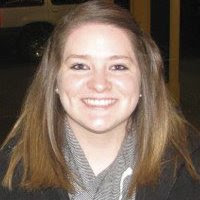
Entry 1 - Literature Circles
For our last assignment, we were to create a literature circle for a group of our students and implement it. Literature circles are a great way to engage students from the beginner level to the advanced level of readers. The students become more involved in their learning and begin to take ownership. Literature circles are also a great way to have students begin to discuss the books they are reading and can dive into a deeper understanding of the book because they begin to see how other perceive the book, text, and pictures. I absolutely love literature circles! They are especially great because they combine reading, writing, speaking, and listening -- all the skills that ESL students need practice with.
Therefore, I was extremely excited about implementing my literature circle lesson plan with the students. I chose the book "John, Paul, George & Ben" by Lane Smith to use with my 4th graders since they were learningabout the Revolutionary War. There are 4 students in this group -- three Hispanic boys and one Sudanese girl. All of the students are intermediate level and the book was right on their reading level. On the first day, the students decided their literature circle roles in the group, which to my surprise went very well. The roles were: discussion director, vocabulary finder, literary luminary, and checker. With the implementation, I quickly realized however that the students needed guidance with what their roles meant and how to effectively complete the role's assignments. The students are high enough where they were able to lead most of the discussion. However, there were a few times where I directed the questions because the students were only skimming the surface of the book and not trying to fully comprehend the book. During these times, I have two beach balls for reading comprehension with questions on them when they were stuck for questions. They would pass the beach ball around and discuss the answers together. They were truly engaged and walked away being able to give me a full summary of the book -- IN DETAIL!!!!! :) I will continue to use literacy circles.
Entry 2 - Personal Reflection on Journey through Fieldwork
Throughout my Master's degree program, the fieldwork class is the one where I feel I learned the most. I was able to take all of the things I learned in all of my previous classes and apply that knowledge in an actual classroom and had the help/advice from a mentor. By being able to work in the classroom and complete an action research and case study, I believe I have gained the most from these assignments because I understand to look at the whole student to best meet their needs. Until the teacher does that, they will only teach to half of the student and not effectively meet their needs.
For all teachers, even those who do not want to be ESL teachers, I would definitely recommend the ESL add-on endorsement because with the number of immigrant students coming into the classrooms, it would greatly benefit them to have some background knowledge in working with them. When taking the ESL add-on endorsement program, I would advise you to soak in everything because it is great information to have! :)
